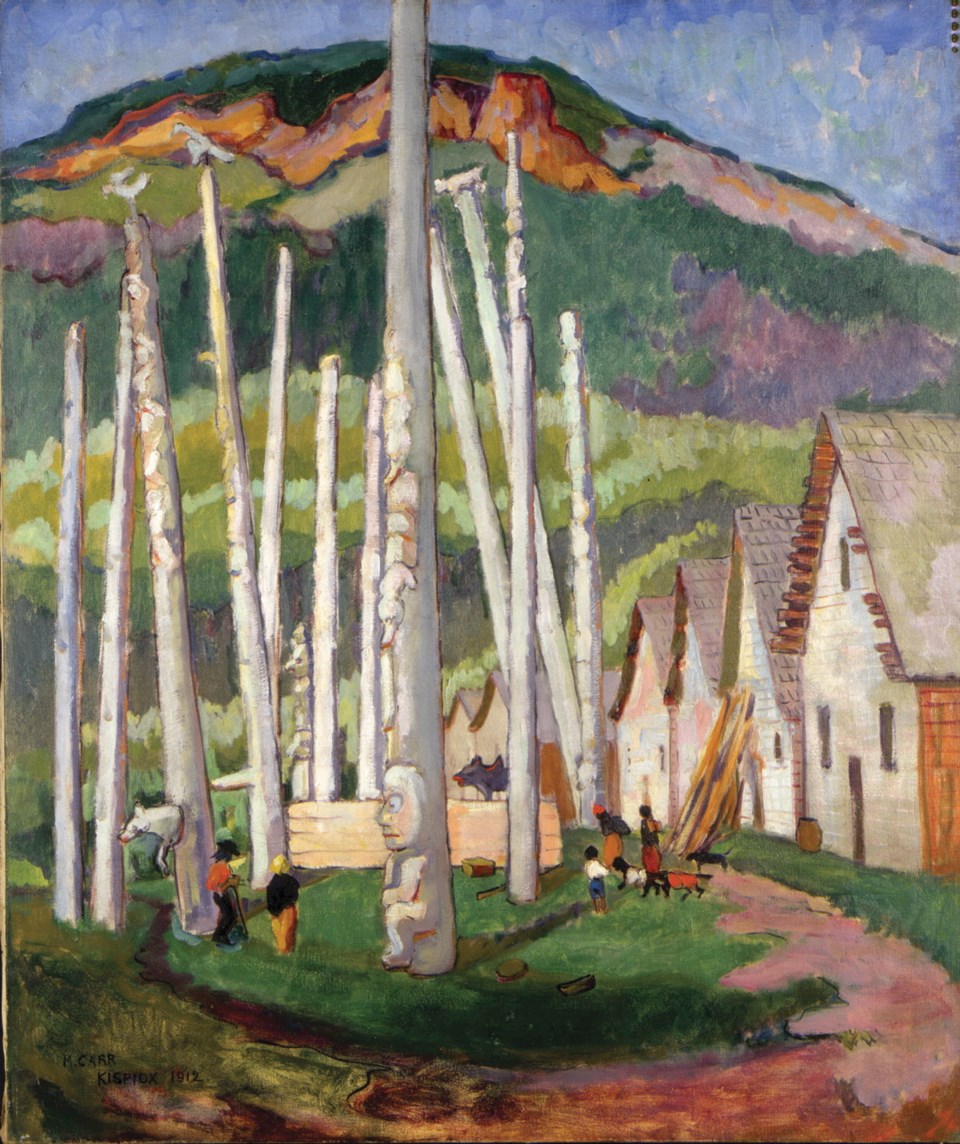The first Emily Carr painting acquired by the B.C. Archives came as a surprise. In 1933, one of the worst years of the Great Depression, two friends of the artist began collecting funds to purchase a painting from Carr.
They believed it scandalous that the government did not own an artwork by this recently “discovered” artist and their intention was to present the painting to the province.
The donors collected the $166 the artist asked for, and the Carr collection was born.
Subsequent acquisitions of Carr’s art and documents were equally grounded in clear intention. When Carr died in 1945, the province purchased seven major works from her estate, reflecting both First Nations subject matter and the natural world. and representing her artistic styles from 1912 through 1937.
In 1962 the province purchased the estate of William Arnold Newcombe — Carr’s neighbour, friend and executor. It included more than 100 of Carr’s earliest works and, notably, pencil, ink and watercolour works depicting Aboriginal children, villages and totem poles that she had made in the field.
The estate also included silver bracelets, model canoes, a rattle and other First Nations pieces collected by Carr and later obtained by Newcombe.
In 1976 and 1981 two significant deposits — the contents of a steamer trunk Carr bequeathed to her friend and literary executor, Ira Dilworth — brought to the archives Carr’s journals, her cartoon “funny books”, more than a dozen sketchbooks, thousands of manuscript pages, drafts for published stories, photographs and books from her library, and hundreds of letters from friends and business contacts.
During the 1970s, ’80s and ’90s, the archives acquired many of Carr’s own letters, cherished by friends who knew their significance. Individual paintings, small hoards of photos, gifts received from the artist, mementos and memorabilia, pottery, hooked rugs and audiotaped reminiscences of those who knew her have come into the collection over the past 50 years. We even have artworks created by Carr’s young students.
The research materials and notes of Carr scholars and writers provide yet another layer of documentation.
The Royal B.C. Museum and Archives holds by far the largest collection of materials documenting Carr’s life and times and nearly every month we receive questions or information about other potential acquisitions.
Among her 1,200 works of art are large oil paintings, sketchbooks, field sketches and preliminary works. Her written archives include literary manuscripts, private journals and correspondence.
It is not enough to hold this material. For many years the archives ran a satellite gallery dedicated to the artist and we continue to lend works to galleries for exhibitions world-wide. Next spring Sea and Sky will be exhibited alongside the work of other major impressionist artists in Paris.
But Victoria is Emily Carr’s hometown. She was born here, lived most of her life just blocks from the museum, and died here.
We have long dreamed of creating a lasting tribute by building a permanent gallery to showcase the rich and varied collections we hold — to celebrate this national treasure — and we are making strides toward that reality.
The extent of our Carr collection and the strength of our staff's curatorial scholarship allow us to provide unique and meaningful experiences for British Columbians and for the world, both on- and off-site.
Our target audiences are provincial and national visitors of all ages but we also anticipate increasing international interest. For these reasons, we will create a venue that meets the international criteria for exhibition both in terms of preservation of art and objects and quality of the exhibition experience.
The Emily Carr Gallery will be a presentation space for the 21st century, allowing for immersive experiences and interactions with experts and providing an overview for international visitors who may be experiencing Carr for the first time.
The museum will provide learning opportunities through special programs and events delivered throughout the year in support of the gallery itself.
This new gallery will be a modern, fresh, appealing space; one that uses interactive media, virtual experiences, live feeds and video to create a behind-the-scenes walkthrough of our storage vaults and archival containers.
The gallery will operate as a learning centre exploring Carr’s work and as a space to exhibit original materials. No one else does this — no one else really can.
Our collection allows us to display finished works in a gallery setting alongside archival records — letters, diaries and manuscripts — presenting visitors with a sense of Carr’s private life and situation.
This gallery will capitalize on our unique holdings and construct a space that is truly immersive-experientially, intellectually, visually and thematically.
The planning is well under way. Stay tuned.
Kathryn Bridge is the curator of history and art at the Royal British Columbia Museum and Archives, and the author of Emily Carr in England.
